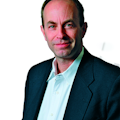BOSTON, MA--With its standing as an incubator for photonics-related startups in the Boston area, the Boston University (BU) Photonics Center’s annual Future of Light (FOL) Symposium is an anticipated event, as it serves as an indicator of what the newest areas of concentration will be in leading-edge commercial photonics. Held on December 4 and 5, 2008, this year’s symposium was the 12th in the series and concentrated on the topics of nanophotonics and plasmonics. About 200 guests attended the event, filling it virtually to capacity.
The core research strengths of the Photonics Center’s faculty include nanoscale spectroscopy and single-molecule biophotonics as well as plasmonics. The Center has precision-measurement equipment such as scanning-electron and atomic-force microscopes, and has photolithographic equipment for fabricating micro- and nano-scale devices. With so many high-tech medical enterprises in the Boston area (having sprung from research at BU, Harvard University, the Massachusetts Institute of Technology, and other local academic institutions), the 12th annual FOL event had a strong (though not exclusively) medical emphasis.
The first day consisted entirely of tutorials, starting off with a short course by Francesco Cerrina of the University of Wisconsin (Madison, WI) on a new technique for parallel synthesis of hundreds of thousands of different biocompounds, such as DNA, using light-directed synthesis. Hatice Altug of BU spoke on the fundamentals of dielectric and metallic photonic nanostructures and outlined some of their uses in communications and biotechnology, while Eric Felkel of the Zygo Corporation (Middlefield, CT) gave a tutorial on interference microscopy of surface structures--useful for materials science, metrology, and microstructure manufacture.
The core of the FOL Symposium was the sessions, hosted on the second day by Bennett Goldberg, a professor at BU’s Center for Nanoscience and Nanotechnology. Both the oral sessions and the poster sessions highlighted the close collaboration between a number of institutions at BU--The Photonics Center, the departments of mechanical engineering and electrical engineering, and others.
Thomas Bifano, director of the BU Photonics Center, spoke on the integration of nanotechnology into the Center--an undertaking in which the Center for Nanoscience and Nanobiotechnology has a central role. Mark Brongersma of Harvard University talked about silicon-chip-based nanophotonics and plasmonics, outlining an integrated plasmonic structure that boosts light absorption by a factor of 10 to 100 in thin slices of silicon and is easily fabricated using standard CMOS processing; the structure allows thinning of silicon for good charge extraction without losing its ability to capture photons.
Clayton Teague, director of the National Nanotechnology Coordination Office (Arlington, VA) outlined the U.S. government’s National Nanotechnology Initiative (NNI), which was formed in 2001 to advance metamaterials and nanophotonics R&D, facilitate transfer of the technology into products, educate about safety and other topics, and finally, to define what nanotechnology really is--which is not an easy task, Teague noted. Teague made a passionate plea for the conference attendees, with all their specialized knowledge, to join the NNI and help with the organization’s roundtable discussions to further define the field as well as measurement techniques. And in the final session, Federico Capasso of Harvard University, famous as one of the inventors of the quantum-cascade laser, spoke on wavefront engineering of light sources using plasmonics, in which a two-dimensional plasmonic structure is fabricated on the facet of a diode laser reduces the beam divergence by more than an order of magnitude without much changing the laser’s efficiency.
About the Author
John Wallace
Senior Technical Editor (1998-2022)
John Wallace was with Laser Focus World for nearly 25 years, retiring in late June 2022. He obtained a bachelor's degree in mechanical engineering and physics at Rutgers University and a master's in optical engineering at the University of Rochester. Before becoming an editor, John worked as an engineer at RCA, Exxon, Eastman Kodak, and GCA Corporation.
